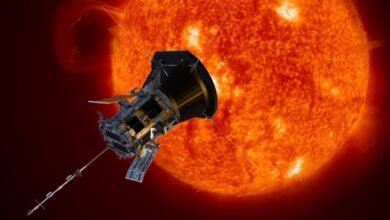Want to get into Warhammer 40K? Here’s what you need to know before playing Space Marine 2

Warhammer 40K: Space Marine 2 is probably the property’s biggest video game release ever, and it’s finally out. We’ve already played it and it’s a fantastic power fantasy that’s fully featured with solo, co-op, and player-versus-player modes. If you want to join in on the fun… but don’t have the slightest clue about the Warhammer 40K universe and/or the first game, this straight-to-the-point primer article is the quick help you’re looking for.
Warhammer 40,000 (often abbreviated as Warhammer 40K or WH40K) is the most popular miniature wargame in the world. Why exactly? Perhaps it has to do with the unique setting and visual vibes. WH40K’s ‘science fantasy’ future is uniquely dark and hostile, setting it apart from other competing sci-fi and fantasy universes almost instantly. It’s also a setting where firearms, heavy machinery, sci-fi weapons, monsters, and fantasy elements coexist in harmony, and its transmedia lore has been expanded successfully over the decades in ambitious ways.
At this point, Warhammer 40K – born in 1987 – is considered the foundational work of the grimdark genre of fiction; its influence quickly expanded beyond the tabletop space and into literature. Over time, its distinct tone and the depth of all the lore and history that were built around the wargame gave birth to something far bigger, which is why we’re now besieged by constant WH40K video game releases such as Boltgun or Mechanicus 2. In the digital realm, the gruesome universe has quickly become immensely popular, and chances are it’ll (Emperor willing) soon become huge on TV too.
If you’re new to the grimdark future of the 41st millennium and you want to know more then we’ve put together this handy guide, in the name of the Emperor!
All the current hype is about Space Marine 2 at the moment, but we also recommend checking out the other best Warhammer 40K games of all time if you have the time and reading our very helpful guide to starting Warhammer 40K without emptying your bank account in the process.
What is the Warhammer 40,000 setting about?
The rabbit hole of Warhammer 40K lore and in-universe history is a deep and extremely dangerous one, but we’ll give you a quick rundown of the overarching picture, which – be warned – is as depressing as it is epic.
The universe’s ‘present day’ is largely set around the year 40,000 AD (which is really just for reference). While it inherited a lot of elements from famous works of fantasy (such as its Warhammer Fantasy counterpart), including species like the Orks, it very much stands on its own.
By and large, 40K’s most defining trait is how violent and relentlessly pessimistic it is; humanity is at the center of the narrative, but the Imperium of Man is a suspicious, xenophobic empire, run by zealots. Scientific progress has all but ceased, and any questioning of the dogma leaves you branded a heretic. The Imperium stands on the brink of total annihilation, beset on all sides by hostile aliens while also facing internal turmoil caused by traitors and heretics.
Out there in the vastness of the galaxy, daemons and evil gods scheme and plot the Imperium’s downfall. In most cases, the supernatural is malevolent, and the Imperium of Man – ruled by a living god called the Emperor of Mankind – is just fighting an endless battle against the forces of darkness and Chaos, delaying its inevitable doom. A brighter future doesn’t seem possible, but neither humanity nor the other sentient species who’ve taken to outer space are going out without a fight.
At the center of magic in this universe is the Warp, which is kind of like the Force in Star Wars… only far more dangerous. It’s actually an alternate dimension home to the powerful Chaos Gods. In the case of humans, ‘psykers’ can tap into this energy and use what we’d call magic. But of course, they’re generally mistrusted and pressed by the Imperium into heavily-controlled servitude; those who fail or are corrupted by Chaos are instantly executed. But the Imperium cannot hope to stand against their many supernatural foes without them, and their powers also make faster-than-light communication possible.
Is the Imperium of Mankind supposed to be good?

Long story short: No.
Most Warhammer 40K stories are told from the point of view of the Imperium because it’s much easier to relate to humans and to build out an ambitious sci-fi setting from ‘our’ perspective. That doesn’t mean that they’re the most powerful faction around or that they’re the ‘good guys’ in this universe. In fact, the 40K humans are rather villainous too.
Terra, called ‘Earth’ in the ancient records, is the throne world of the Imperium in the 40K universe, but it’s barren and contaminated after thousands of years of war and aggressive exploitation.
The Imperium’s history is defined by blood and sacrifice, and was founded by the Emperor of Mankind in the 30th millennium. This god-emperor is seemingly immortal and has been around for a very long time; he’s defined by his combined psychic, physical, and intellectual power, which make him the strongest psyker alive. However, his grave wounds suffered during the Horus Heresy (a big civil war in the Imperium) left him near death and largely unable to communicate. He survives only due to the mechanisms of the Golden Throne. With their immortal guiding hand unable to… well guide them, the Imperium has become a shell of its former self over the 10,000 years that followed the heresy, with various internal factions seizing power for themselves.
The Emperor has “ruled” for roughly 10,000 Terran years, and though weakened, his psychic power still helps maintain the Imperium’s Astronomican — a ‘psychic navigational beacon’ which he uses to guide other human psykers across the Milky Way. The problem? This apparatus is powered by thousands of psykers called the Chosen; hundreds of them die every day to keep the Astronomican functional, and this is just one of the several forms slavery that help keep the galaxy-spanning Imperium ‘alive’ as in capable of defending itself from all the threats to its existence.
Every world of the Imperium must also, of course, pay hefty taxes, send people to join the military, and recognize the Emperor as the one true god of Mankind, which is a ‘small price’ to pay in order to be protected by the Imperium’s defenders and military forces. It’s an openly authoritarian and harsh government that uses the troubled and dark times to justify its stranglehold on humanity.
Who are the Space Marines?

Across the vastness of the Milky Way, the bulk of the Imperium’s forces – and in most cases, the first line of defense – are the Astra Militarum (also known as the Imperial Guard). These men and women have unflinching faith in the God-Emperor, yet they’re mere mortals.
The Space Marines or Adeptus Astartes are the greatest of the Imperium’s warriors, who effectively become superman through genetic modifications, conditioning, and cybernetic augmentations (on top of the harshest training known to man). To most of the humans in the Imperium, even those among the Militarum, they’re rare — the stuff of legends. In many ways, they’re deserving of such a reputation, as they can withstand injuries and diseases that would kill regular humans, and know no fear. Their iconic power armors and giant (for a regular human) weaponry only make them more lethal and fearsome. They’re the Emperor’s strongest tools of war and will fight until they’re dead.
Even the mighty Adeptus Astartes are not perfect though, and they can be seduced by the forces of Chaos just like regular mortals; that’s how the ruinous Chaos Space Marines came to be. While most of them belong to the Traitor Legions that betrayed the Emperor during the Horus Heresy civil war, others come from later Space Marine Chapters. The matter of ‘renegade’ Marines has gradually become a grave issue, and that’s why their faith and resolve must only become stronger as the seemingly endless Chaos conflict advances.
What happened in the first Space Marine game?

The original Warhammer 40K: Space Marine game told a compelling story centered on Captain Demetrian Titus of the Ultramarines, a strong leader tasked with defending the Forge World of Graia, which was being invaded by the Orks. As the mission advanced, a hidden threat in the form of a dangerous artifact and sinister forces of Chaos was uncovered, complicating his mission.
Titus and his Ultramarine allies, with the help of the Astra Militarum and other Space Marines, won the battle for Graia and prevented an invasion from the Warp, but Titus’ mysterious resistance to the Warp’s energies and Chaos powers stirred suspicious of him actually being an enemy in disguise. Leandros, a by-the-book, younger Marine, claimed Titus had been corrupted by Chaos, and so the Inquisition took him away like a traitor instead of a hero.
Space Marine 2 kicks off after the return of Roboute Guilliman, the Primarch of the Ultramarines, and in the middle of the Imperium’s Indomitus Crusade to reclaim lost worlds from its alien enemies. Everything seemed to be going reasonably well until the terrifying Tyranids – an extragalactic insectoid race that wants to consume all forms of biomatter – hit the western part of the galaxy.
Titus had been imprisoned and tortured for a century, but eventually he was freed and allowed to return to his chapter, but instead, he chose a self-imposed penance and joined the Deathwatch, a special order composed of Space Marines from multiple Chapters which actively hunts alien threats.
The Ultramarines aren’t done with him yet though, as we see in the opening moments of Space Marine 2.
Source link



